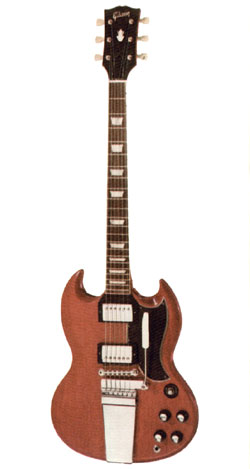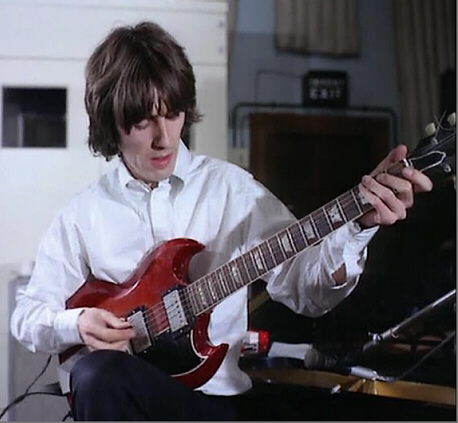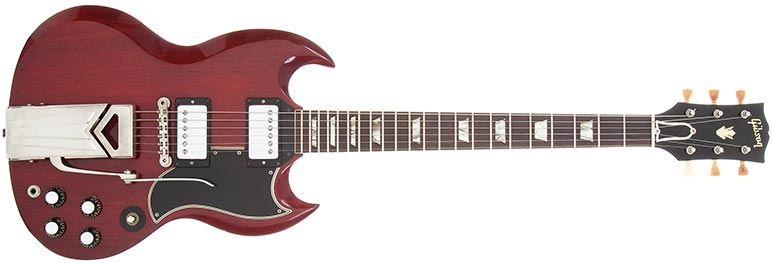
The Gibson SG Standard is a true guitar icon. Instantly recognisable, lightweight, with great upper fret access, and amply equipped with two Gibson PAF (later patent number) humbuckers. It was the best known of Gibson's SG range, being used by many famous 1960s artists: George Harrison of the Beatles (his 1960s SG Standard sold in Dec 2004 for almost £300,000), and Eric Clapton of Cream to name but two early users, although it would seem just about every professional guitarist has used one at one point. In many ways the snarling SG tone helped define the late 1960s blues-rock sound, and its devilish good looks gave it a visual edge that simply screamed rock. It's no wonder that the SG Standard has been a key part of Gibson's solid-body range for almost 50 years.



1961 Gibson SG Standard with side-to-side tremolo Image Heritage auctions
The SG series derived from the Gibson Les Paul, with the SG Standard initially named the Les Paul Regular. It was designed and built at Gibson's Kalamazoo factory, alongside the Les Paul (SG) Custom, and launched in early 1961, with the other models added shortly afterwards.
This model was a step above the SG Special being fitted with two nickel or chrome covered Gibson humbuckers rather than single coil P90s, but a step below the SG Custom, which had three humbuckers with gold covers.
Naturally any guitar with such a long production run evolved somewhat over time. Early examples 1961-1962 were equipped with a "sideways" vibrato, but by 1963 this was replaced with the (far more effective) Maestro Lyre vibrato. By 1965 nickel hardware had been replaced by chrome.
Like all SGs (at least at launch), it sported a mahogany neck, set to a mahogany body. The Rosewood fingerboard had trapezoid block position markers. This was, and still is, typical Gibson construction, and along with the Gibson humbuckers, played a major part in giving the SG it's characteristic sound. In the early 1970s, mahogany gave way to maple as the neck timer of choice.
Interestingly it was briefly withdrawn in 1971/early 1972 to be replaced by a very similar model the SG Deluxe, which was functionally the same, but cosmetically rather different. It had scratchplate mounted electronics and no back body route; which was a more efficient (ie cheaper) means of guitar assembly than having electronics assembled directly into the guitar body. The Maestro vibrato of the 1960s was replaced by a new Bigsby model. Customers didn't like the changes, and sales of the Deluxe were considerably lower than of the SG Standard in previous years, leading to a quick reversal in time for the summer NAMM show of June 1972.
The reissued 1970s SG Standard had somewhat updated hardware - no vibrato, just the standard Gibson "wide-travel" or harmonica bridge and stop tailpiece. It remained in production throughout the 70s, and early 1980s appearing in all major catalogs for the rest of the Norlin period.
$21500
$19675
$17000
$15500
$15000
$14999
$12500
$9795
$9775
$7500
$6850
$5599
$5500
$3999
$3500
$3250
$3000
$2599
$2500
$1790